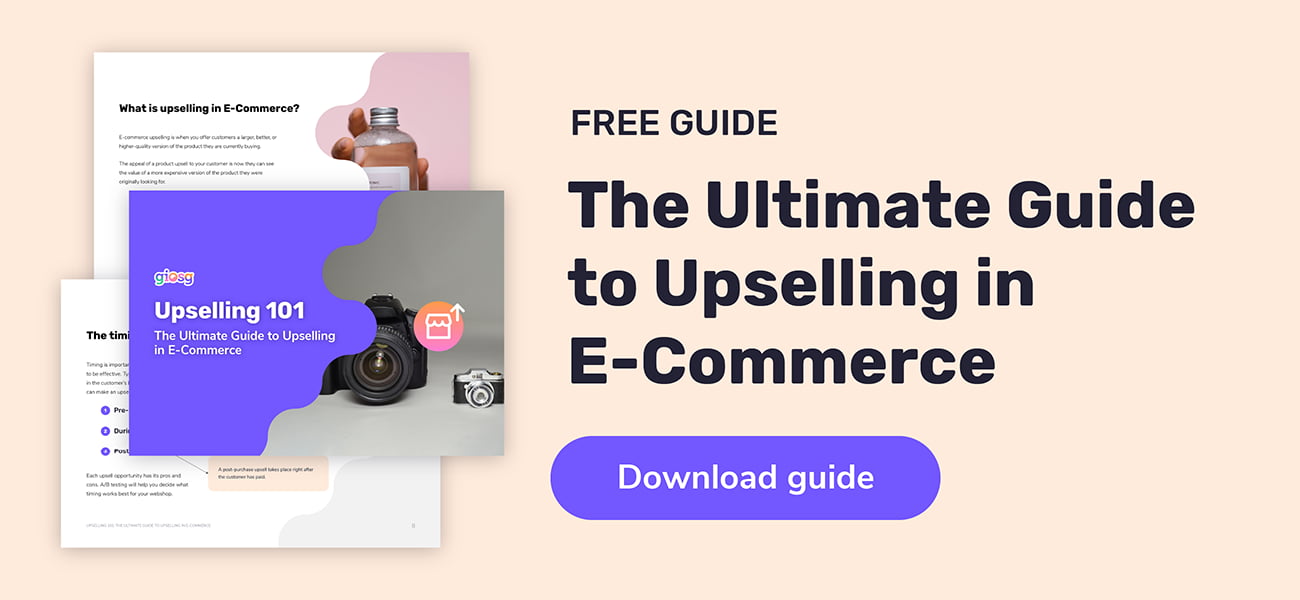Many eCommerce platforms need help with shopping cart abandonment, which can lead to revenue loss and decreased conversion rates.
But while shopping cart abandonment is common, following a few simple steps you can reduce checkout abandonment.
After long research, and analyzing case studies, we have gathered the best 5 actions you can take to reduce your shopping cart abandonment while improving website performance.
Take a notepad and pen, and let’s get to it!

Table of contents
1. What is shopping cart abandonment rate?
2. What are the main causes of shopping cart abandonment rate?
3. Best ways to prevent shopping cart abandonment
1. What is shopping cart abandonment?
Shopping cart abandonment happens when a potential customer creates a shopping cart, fills it up, and doesn’t complete the purchase.
Statistics show that from 2006 to 2023, the shopping cart abandonment rate skyrocketed to 70%.
These numbers may seem a bit discouraging. But with the right customer relationship management systems (CRM), payment getaways, and marketing automatization tools, you can turn those conversion rates around.
Oh, and by the way, if you want to find out your conversion rate – you can do so by dividing the total of finalized purchases by the number of shopping carts created in total. The total needs to be multiplied by 100.
2. What are the main causes of shopping cart abandonment?
Addressing cart abandonment is the first step to understanding why it's happening.
Some of the most common causes for shopping cart abandonment that hurt your eCommerce metrics are:
2.1 Unexpected costs
This one is quite simple and we can all understand it from the customer side.
Let’s say we fill up our shopping cart, and once we are done shopping we head to the checkout page. If at the moment of checkout, we see we need to pay a high amount of money for the shipping cost, we will abandon the shopping cart. Why? We can always look for better options online.
Just like the Marketing Manager of The Big Phone Store, Brandon Wilkes explained to us:
“If you are not transparent from the moment a customer enters the website, high shipping costs may prompt them to seek cheaper alternatives.”
Not being upfront about shipping costs can also lead to a negative impact on customer lifetime value.
2.2 Complicated checkout process
There is no secret here, you need to make everything easy and simple for the customer. You need to help them in their decision-making process.
One of the reasons people love to shop online is because of the convenience. It’s quick and painless to browse hundreds of items and then purchase when ready.
A complex checkout process brings the ease of online shopping to a screeching halt. A dizzying amount of fields to fill out, a user account to create, and limited payment options do wonders for discouraging buyers from completing their orders.
It is basic consumer psychology, at the end of the day they are giving you their money, so why make things complicated for them?
%20(19).webp?width=1300&height=650&name=Untitled%20(1300%20%C3%97%20650px)%20(19).webp)
User Experience, (UX Design), plays a very important role here too!
If the checkout page is complicated to understand and the shopper can’t find the right buttons to complete the purchase or the website is not mobile optimized. The customer experience will be poor, and the shopper’s journey will be affected.
Another downside is not having enough payment options available for the customers. If the shoppers were impulse buying, and your page payment getaway is not optimized. You will lose your chance to sell.
2.3 Lack of trust and security concerns
Online shoppers want to shop on a website that feels secure.
Trust is especially important if the visitor is planning to make a higher-value purchase. Everything on your website has to work smoothly.
Just as the Marketing Manager of The Big Phone Store, Brandon Wilkes explained to us:
“If the visitor is making a big purchase even the slightest thing can put them off."
"It's all about trying to convince them that at the end of the day, you're the most trustworthy website with the best service.”
Over the decade, we’ve all learned of the high-risk scamming potential on the internet, so online consumers are hesitant to whom they give their credit card information.
Customers may have made it to your checkout page but abandoned their cart because they didn’t trust your payment security or shop quality.
This feeling of distrust can stem from a website with an outdated layout, no payment security guarantees, or no mention of a return policy, for example.
2.4 Technical issues
We live in the future, so if an e-commerce site is slow, it will kill your sales, and the bounce rate will be high.
Just imagine this: you go through the entire checkout process.
You introduce your card details and click on Confirm the purchase. What if the page never loads, or what if when it does it shows “payment failed”? Would you go through the whole process again or leave the e-commerce site?
If the payment fails because of technical issues, the customer will have a re-think about putting their credit card numbers down the line again.
2.5 Comparison shopping
It’s no secret that customers will look for the best quality and the lowest price. And while they are on your site filling up those shopping carts.
The truth is that they probably are checking other eCommerce websites, looking for the best prices.
So here, is when all the previous causes for abandoned cart rate influence the shoppers' actions. If other sites let the customer buy without creating an account, give several discount codes, and several payment options, they will go for those better options.
In a few words without eCommerce optimization, conversions are going to be very low.
3. Best ways to stop shopping cart abandonment

We know the potential problems that can lead to shopping cart abandonment.
But, how can we improve and achieve eCommerce conversion optimization?
Here I have some of the most successful solutions and strategies employed by eCommerce businesses that are guaranteed to lower cart abandonment.
3.1 Build store credibility
One of the most common abandoned cart solutions is adding customer reviews and testimonials to your website. Social proof that your products and eCommerce are legit creates trust in your potential customers.
For example, you can add a section on your product pages with reviews of customers with profile accounts. Here, they can add photos of the products, and having a clear image of the customers and products will increase the trust factor.
Another great place to add social proof is the checkout page, if they can see happy customers, they will believe in your store and products.
You can have a section explaining the shipping and return policies, as well as data protection notices. This can give another confidence boost to the customer, and you can decrease cart abandonment in your eCommerce.
Other tools such as website health checker can significantly help you by assessing your website’s technical SEO health.
Last but not least, adding trust factors such as secure payment budges will give reliance to the customer to finalize the purchase.
3.2 Have a streamlined checkout process
Checkout process optimization is vital.
You need to offer your customers a checkout process that is comfortable, simple, and efficient.
Some great tips for cart abandonment prevention include using single-step or multi-step forms where you can limit form fields and minimize the number of typing tasks. Or even offer guest checkout altogether!
Another great thing to implement is making your shopping cart easy to find, or adding shopping cart sliders. Where customers can see their shopping carts without the need to leave the checkout page.
Making your shopping cart visible includes as well shopping cart optimization for different devices, so your customers can finish their purchases from their mobile devices, tablets, or desktops.
Running A/B testing can be the best way to comprehend what works better for your page, and learn about your customers, and their tastes. This way you can craft the best e-commerce strategy and grow your business.
Something that can completely change your conversion rates is adding a live chat to your checkout page. If a customer is feeling lost in the checkout process this can trigger a chat and they can connect with an agent who can help them through the process.
As far as payment options go, co-founder of AxonOptics, Ben Rollins, suggests “offering various payment options, including credit and debit cards, PayPal, and cryptocurrency,” for example.
3.3 Come up with intent-based incentives
.webp?width=1300&height=650&name=Untitled%20design%20(1).webp)
Offering free shipping and discounts are amongst the best shopping cart recovery strategies.
We know that shipping fees can be a real letdown for customers and make them question their purchases. That is why you should consider adding a free shipping option.
This doesn’t mean that you will have to cover the price of said shipments, but it means that you will need to add the shipping cost to the product prices.
Other very popular cart recovery tactics include offering customers special offers or discounts. Let’s say a new customer goes into your online store and they encounter a landing page offering a €10 discount, or a 15% discount to the first purchase.
These cart recovery tactics will help you a great deal, especially when customers are checking different eCommerce to get the best deals and discounts.
3.4 Send abandoned cart emails
Abandoned cart recovery emails are one of the many marketing efforts you can put into practice to recover abandoned shopping carts.
First, you need to know that adding analytics and tracking software to your e-commerce is needed. This way you will get notified when someone abandons a shopping cart. The next step is adding a marketing tool to set killer abandoned cart email campaigns.
An email campaign to recover abandoned shopping carts needs to start with a clever subject line. It will get the customer’s attention and make them open the email.
In the email, you should include the item left on the shopping cart and a nice customer review about it. Another option would be offering a discount code for that abandoned shopping cart.
You cannot miss a clear call to action (CTA), it doesn’t have to be a “buy now”, it can be something more appealing for customers.
For example, if they left a camera in the cart, the call to action could be “capture great memories”. You can be witty!!
3.5 Use cart retargeting strategies
Many eCommerce tools include retargeting campaigns, and the reason behind it is that cart retargeting strategies work wonders!
Retargeting tools include chatbots and virtual assistants. Conversations pop up to connect with customers who revisit an eCommerce where they created a shopping cart.
In this pop-up conversation, the chatbot will offer help with the products they are interested in or offer discount codes. You name it!
Retargeting email campaigns to reduce checkout abandonment can include ads. Picture this: a potential customer visited your online store and created a shopping cart. In this cart, they added a hiking kit. Maybe the trip got cancelled or they couldn't afford the kit they liked.
If you can create an ad targeted to their Instagram page, where they see the item they like is 30% off. You will redirect them to your e-commerce site, with higger chances of converting!
Conclusion
While shopping cart abandonment can be quite high in most industries, you can turn things around with these incredible strategies and tips!
Most of the time, the key to solving all your problems is understanding what the customer needs. And most simple things can change the story of your business and e-commerce site.
Are you ready to put these cart abandonment best practices to the test?
Do you want more tips on how to strengthen your e-commerce shop? Download our Upselling 101 Guide and learn how to increase average order value!
